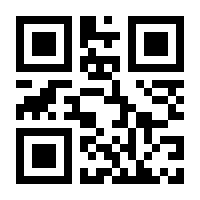![Buchcover Intermolecular [2+2]-Photocycloaddition Reactions of complex Acceptor-Donor Systems and Developement of an Enantioselective Photocatalyzed Hydroformylation Reaction | Jens Lefarth | EAN 9783843948517 | ISBN 3-8439-4851-8 | ISBN 978-3-8439-4851-7](https://buch.isbn.de/cover/9783843948517.jpg)
×
![Buchcover ISBN 9783843948517]()
Intermolecular [2+2]-Photocycloaddition Reactions of complex Acceptor-Donor Systems and Developement of an Enantioselective Photocatalyzed Hydroformylation Reaction
von Jens LefarthOver the last two decades, the field of photocatalysis gained renewed interest. A major challenge in organic synthesis is the formation of new C-C bonds. Due to the highly energetic excited state photocatalysts, many thermally inaccessible chemical transformations become available. One of greatest advantages of photocatalysis is the use of visible light, resulting in mild and environmentally friendly reaction conditions.
The focus of this thesis relied on the introduction of C1-building blocks that reflect a protected formaldehyde unit as well as the development of an intermolecular photocatalyzed [2+2] cycloaddition of acceptor-donor systems.
Hydroformylation reactions are important industrial processes that result in the activation of alkenes. Since these processes have high energy consumption and require expensive transition metal catalysts, the need for milder and more environmental friendly alternatives arises. Herein, a hydroformylation reaction of enones with the formyl equivalent 1,3-dioxolane was developed under visible light excitation. For this purpose, the benign and environmentally friendly dye Eosin Y could be used as a photocatalyst. Furthermore, using chiral formyl equivalents based on amino acids, an enantiomeric excess by chiral induction could be obtained.
In the second part of this thesis, an intermolecular photocatalyzed [2+2] cycloaddition of acceptor-donor systems was developed, which were only rarely investigated so far. Hence, the reaction of the two model substrates chalcone and 2,3-dihydrofuran was investigated, which resulted in a complex product mixture of four major diastereo- and regioisomers as well as dimers of chalcone. A control over the product diversity could be achieved by adjusting the reaction conditions such as the photocatalyst, additives or solvent. Information about the origin of the regioselectivity and the various products could be obtained from electrochemical analysis and DFT calculations.
The focus of this thesis relied on the introduction of C1-building blocks that reflect a protected formaldehyde unit as well as the development of an intermolecular photocatalyzed [2+2] cycloaddition of acceptor-donor systems.
Hydroformylation reactions are important industrial processes that result in the activation of alkenes. Since these processes have high energy consumption and require expensive transition metal catalysts, the need for milder and more environmental friendly alternatives arises. Herein, a hydroformylation reaction of enones with the formyl equivalent 1,3-dioxolane was developed under visible light excitation. For this purpose, the benign and environmentally friendly dye Eosin Y could be used as a photocatalyst. Furthermore, using chiral formyl equivalents based on amino acids, an enantiomeric excess by chiral induction could be obtained.
In the second part of this thesis, an intermolecular photocatalyzed [2+2] cycloaddition of acceptor-donor systems was developed, which were only rarely investigated so far. Hence, the reaction of the two model substrates chalcone and 2,3-dihydrofuran was investigated, which resulted in a complex product mixture of four major diastereo- and regioisomers as well as dimers of chalcone. A control over the product diversity could be achieved by adjusting the reaction conditions such as the photocatalyst, additives or solvent. Information about the origin of the regioselectivity and the various products could be obtained from electrochemical analysis and DFT calculations.


